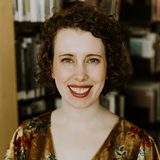What Is the 10-Year Treasury Yield?
The 10-year Treasury yield is currently above 4.3%. It is a benchmark for a nearly “risk-free” investment. It has recently been volatile as investors fear a recession on the horizon.

Many, or all, of the products featured on this page are from our advertising partners who compensate us when you take certain actions on our website or click to take an action on their website. However, this does not influence our evaluations. Our opinions are our own. Here is a list of our partners and here's how we make money.
The investing information provided on this page is for educational purposes only. NerdWallet, Inc. does not offer advisory or brokerage services, nor does it recommend or advise investors to buy or sell particular stocks, securities or other investments.
The 10-year Treasury yield describes what 10-year U.S. Treasury notes will pay over 10 years if bought today. Also known as T-notes, Treasury notes are a low-risk fixed-income investment that pays a set interest rate every six months.
The 10-year Treasury is frequently used in the news as a barometer or proxy for economic factors, including investor sentiment and mortgage rates. Recently, the 10-year yield has been hovering above 4.3%. When demand for Treasurys rises, yields fall.
» Want to invest? See the best brokers for bond investing
Brokerage firms | |
|---|---|
What is the 10-year Treasury?
Considered one of the lowest-risk investments on the U.S. market, 10-year Treasurys are a “risk-free” benchmark against which other investments and debt are compared. (Three-month Treasury bills are another.)
While no investment is ever completely risk-free, Treasury notes come close if held to maturity. Some investors and analysts look to demand for T-notes as one way to assess investor confidence in the economy.
Treasury notes are one of four main types of U.S. government debt securities. The others are Treasury bills, Treasury bonds and Treasury Inflation-Protected Securities (TIPS). They vary in their duration, interest payments and yields.
» Learn more: What are Treasurys? Government bonds vs. notes vs. bills
Why is the 10-year Treasury yield important?
As one of the lowest-risk investments on the market, the 10-year Treasury and its yield are important for several reasons. First, investors use the 10-year Treasury as a baseline against which to compare the risks and rewards of other investments.
Treasury rates also affect interest rates for other types of consumer debt, such as real estate and mortgage loans. Consumers often compare the return they could earn on Treasurys with certificates of deposit, money market accounts, corporate bonds and mortgage-backed securities. So when yields for 10-year T-notes go up, real estate and mortgage debt rates do, too.
Finally, supply and demand for Treasurys fluctuate with the economic climate. Market downturns often drive investors to Treasurys in search of a safe haven. However, high inflation expectations may cause Treasury prices to fall and yields to rise, as has happened in April 2025. Investors may demand a higher yield to compensate for higher inflation in the future. When times are good, investors tend to seek out other investments that can provide a higher return, which can also cause Treasury prices to fall and yields to rise.
Are 10-year Treasury notes a good investment?
Whether 10-year Treasurys are a good investment depends on your investment goal. If your goal is to let your money grow slowly and conservatively over time, Treasury notes are considered a low-risk investment if held to maturity since the U.S. government backs them.
One of the main risks with Treasury notes is what’s known as “opportunity cost”: You could forgo potential profits by investing in T-notes instead of a security with a higher potential return, such as stocks or index funds.
10-year Treasury rate history
Persistent inflation and economic growth pushed the 10-year Treasury yield to around 5% in late in 2023. Yields hovered closer to 4% in 2024, but they've crept back up toward 4.5% in 2025 amid higher inflation expectations due to tariffs.
Looking historically, from 1962 and 2024, the yield was highest in September 1981 at 15.84% and lowest in July 2020 at 0.55%.
10-year Treasury notes: Price vs. yield
The purchase price or face value of a Treasury note is what you pay to buy it. The T-note’s yield is the interest rate you earn for loaning the government money.
The U.S. government sells Treasury notes at auction through a bidding process. The Treasury first accepts any noncompetitive bids or bids from investors who buy at the current T-note rate and yield. Then, it accepts the highest competitive bid. If demand for Treasury notes is high, they may sell for more than their face value. If demand is low, on the other hand, Treasurys can sell for less than their face value.
The Treasury may raise the yield of newly issued 10-year notes if the price of existing 10-year notes starts to fall on secondary bond markets (because of market forces like inflation). If inflation is high, the potentially higher yield of newly issued 10-year notes will make them more attractive than previously issued T-notes.If rates decline, the opposite becomes true: bond prices rise and previously held bonds become worth more in the long run.
This effect is also known as interest rate risk and is most relevant for investors trying to sell T-notes on a secondary market. If held for their full duration, Treasury notes still pay their coupon payments and principal in full. But if a T-note-holder were to sell early, they may have to do so at a lower price.
Treasury yields (and prices) can also fluctuate in response to economic uncertainty. Rising yields (or falling prices) may indicate that investors expect inflation to increase in the future, as they have in 2025 due to tariffs.
How do you buy 10-year Treasury notes?
Treasury notes can be bought in increments of $100 directly from the U.S. government via TreasuryDirect or through a bank or broker. T-notes can also be purchased bundled together as a Treasury exchange-traded fund.
Earn 3.63% APY by investing in U.S. Treasury Bills*
Maximize your cash by investing in low-risk, government-backed T-Bills. All the work is done for you — just make the deposit and watch your money grow.

10-Year Treasury ETFs
10-Year Treasury ETFs are ETFs primarily comprising Treasury notes of varying lengths and can also contain Treasury bills and Treasury bonds. They may be labeled as intermediate- or long-term Treasury ETFs, such as those offered by iShares, SPDR and Vanguard.
You may also come across leveraged or inverse 10-year Treasury ETFs. These carry considerable risks and should be considered speculative short-term investments. We’ve excluded these from our list, which focuses on Treasury ETFs containing 10-year Treasury notes.
Fund Name | Ticker |
|---|---|
BondBloxx Bloomberg Ten-Year Target Duration US Treasury ETF | XTEN |
iShares 7-10 Year Treasury Bond ETF | IEF |
SPDR Portfolio Intermediate-Term Treasury ETF | SPTI |
SPDR Portfolio Long-Term Treasury ETF | SPTL |
US Treasury 10 Year Note ETF | UTEN |
Vanguard Intermediate-Term Treasury ETF | VGIT |
Vanguard Long-Term Treasury ETF | VGLT |
WisdomTree 7-10 Yr Laddered Treasury Fund | USIN |
Do you pay taxes on T-notes?
Investors pay federal income taxes but no state or local taxes on T-notes and other Treasurys.
Next steps
10-Year Treasury Rates
10-Year Treasury Rates





